Imagine a scenario where your departure for work turns your home into a stage for a Dachshund drama – complete with howls and household havoc. This isn’t just a minor inconvenience. It’s a sign of separation anxiety in Dachshunds, a condition all too common and often misunderstood. This guide aims to demystify this condition and offer practical solutions to help your four-legged friend cope better when you’re away.
What is Separation Anxiety in Dachshunds?
Separation anxiety in dogs is akin to a severe case of homesickness. It’s more than just a whimper or a sad look; it’s an intense stress reaction that manifests through a variety of behavioral problems. Imagine your pooch turning into a furry escape artist or a solo interior decorator (and not the kind you’d hire) whenever you leave. That’s separation anxiety for you.
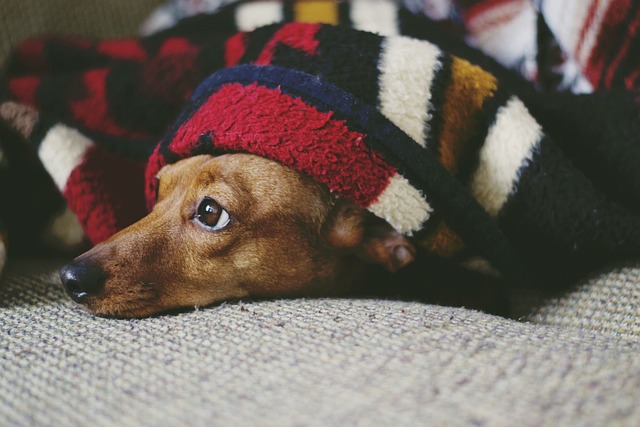
The Dachshund’s Distress: Recognizing the Signs of Dachshund Separation Anxiety
Your mission, should you choose to accept it, involves spotting the signs of separation anxiety in your Dachshund. This includes Sherlock-Holmes-level observation for behaviors like excessive barking, destruction, and escape attempts. Don’t forget the physical clues like drooling or panting, which are akin to doggy distress signals.
- Excessive Barking or Howling:
One of the aspects of separation anxiety in Doxies is that a dog will frequently and persistently bark or howl when left alone.
- Destructive Behavior:
This includes chewing, digging and destroying household items. Doors and windows can become ruined when dogs either try to escape or run to their owner.
- Pacing:
When separated from their owner, some dogs walk or trot along a fixed path in a set pattern. This suggests that they are restless and anxious.
- Urination and Defecation:
While house-trained, a dog with separation anxiety may urinate or defecate in the house when left alone because it is stressed.
- Escaping:
When you’re not around, your Doxie might attempt to escape from a restricted area. Such attempts could lead to self-injury and other damages as well.
- Excessive Drooling or Panting:
These are symptoms of stress and anxiety in dogs. Perhaps you will find an evident increase in saliva, or heavy breathing apart from physical exertion.
- Coprophagia (Eating Feces):
Some separation anxiety sufferers will eat their own feces. This is usually a distress knob and to respond one must start at the bottom of the stack.
- Change in Eating Habits:
Separation anxiety in dachshunds may also take the form of refusal to eat or changes in appetite when left alone. Stress has an impact on their eating behavior.
- Attempts to Follow the Owner:
When the owner is preparing to leave, the dog can become very sticky, or even be suffering.
- Changes in Behavior:
General changes in temperament, including greater clinginess or anxiety (especially before you have to leave the house), are also included.
Knowing these symptoms is an important step in recognizing and managing separation anxiety in Dachshunds.

Why are Dachshunds prone to separation anxiety?
Dachshunds, the charming weiner dogs, are known for their unwavering loyalty. This endearing trait, however, makes them more prone to separation anxiety. Their strong attachment to their humans is heartwarming but can also set the stage for panic when left alone.
Diagnosing the Doggo: When to Seek Professional Help
If your Dachshund’s behavior suggests a case of separation anxiety, it’s time to consult a veterinarian or a canine behaviorist. They’re the doggy detectives who can decipher whether your pooch’s antics are due to anxiety or something else entirely.
Creating a Canine Castle: Managing the Environment
Your home should be a safe haven for your Dachshund. This involves creating a cozy, personalized space that feels secure even in your absence. A consistent routine also helps, providing a sense of predictability and security. To help your pet feel safe and snug, we recommend you to take a look at our collection of Dachshund Beds.
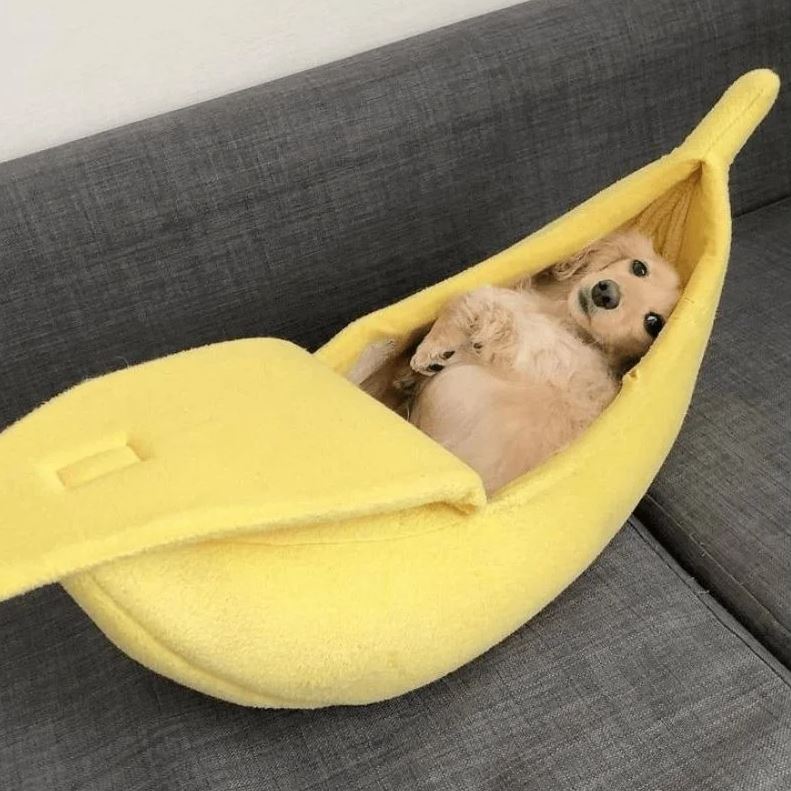
Training Methods to Treat Separation Anxiety in Dachshunds
Training methods like desensitization (gradually increasing alone time) and counter-conditioning (associating your departure with positive experiences) can significantly help. It’s like turning the act of you leaving into a signal for treat time, rather than panic time.
The Power of Love: Emotional Support and Bonding
Spending quality time with your Dachshund is crucial. This isn’t just about playtime; it’s about building a bond so strong that your absence becomes less of a big deal. It’s about being the calming presence in their life.
Medication: A Helping Paw
In some cases, your vet might suggest medication. This isn’t about doping up your dog but giving them the extra support they need to cope with anxiety. Think of it as a helping paw, alongside behavioral strategies.
Thinking Outside the Dog Box: Alternative Therapies
Holistic approaches can also play a significant role in managing separation anxiety. This could mean tweaking their diet, increasing their exercise, or even trying out doggy yoga. A balanced lifestyle is as important for your pooch as it is for you.
Calling in the Cavalry: Professional Training and Behaviorists
Sometimes, you need to bring in the big guns – professional dog trainers or behaviorists. These experts can offer customized strategies and insights that can make a world of difference.
Prevention: Better Safe Than Sorry
The best approach to separation anxiety is preventing it from developing in the first place. Early socialization and teaching your Dachshund to enjoy some alone time can build a foundation of confidence and independence.
How To Desentisize a Dachshund Before Leaving the House?
Desensitizing a dog to your departure is a gradual process that requires patience and consistency. Here’s a step-by-step guide to help your dog become more comfortable with being alone:
Start with Short Departures:
Begin by leaving your dog alone for just a few minutes. For example, step outside the door and come back in almost immediately.
Gradually increase the time you’re gone. After several days, extend it to 5 minutes, then 10 minutes, and so on.
Normalize Departure Cues:
Identify the actions you take before leaving that your dog recognizes (like picking up keys or putting on shoes).
Perform these actions several times a day without actually leaving. Pick up your keys, wander around the house, then put them back. This helps break the association between these cues and your departure.
Create a Positive Association with Your Departure:
Before leaving, give your dog a treat or a puzzle toy filled with treats. This creates a positive association with you leaving.
Special Dacshund Toys That Can Help in Easing Separation Anxiety
You can use special treats that they only get when you’re going away, making your departure a time to look forward to. We recommend you take a look at the Dachshund IQ Feeder Toy which can help you keep your furry friend occupied while you’re out. You should fill this interactive dachshund toy with dry kibble and as your dog turns the wheel, it will release the treats.
So, what can make your dog better occupied than a portion of tasty snacks?
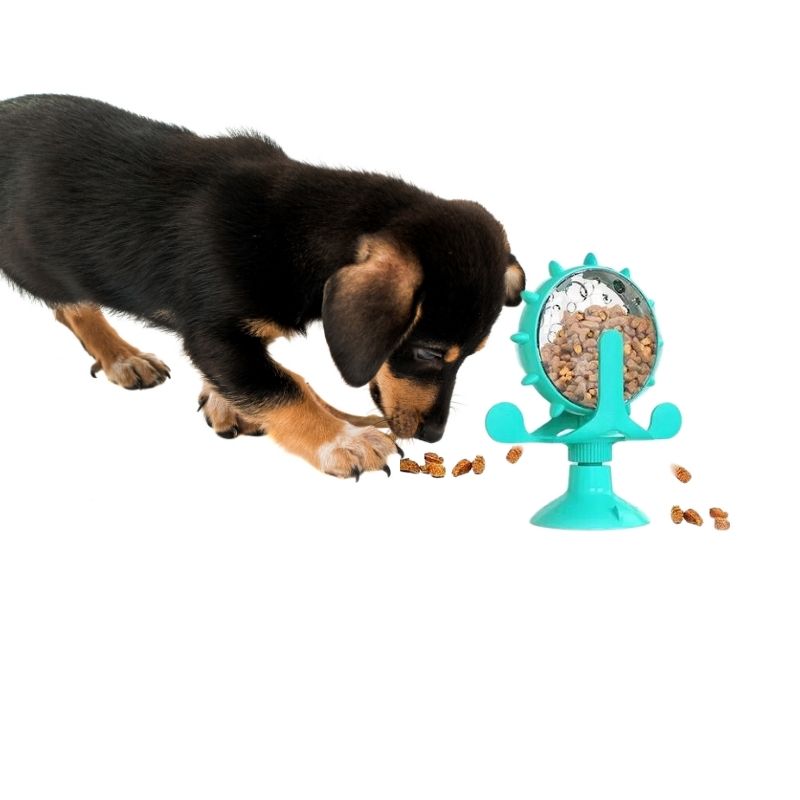
Interactive UFO Toy For Dachshunds is another interactive toy that can help your pooch stay entertained and become pleasanty tired while spending time alone. This toy looks like a UFO and it should also be filled with dry kibble. As your hot dog rolls it, it will release the snacks.
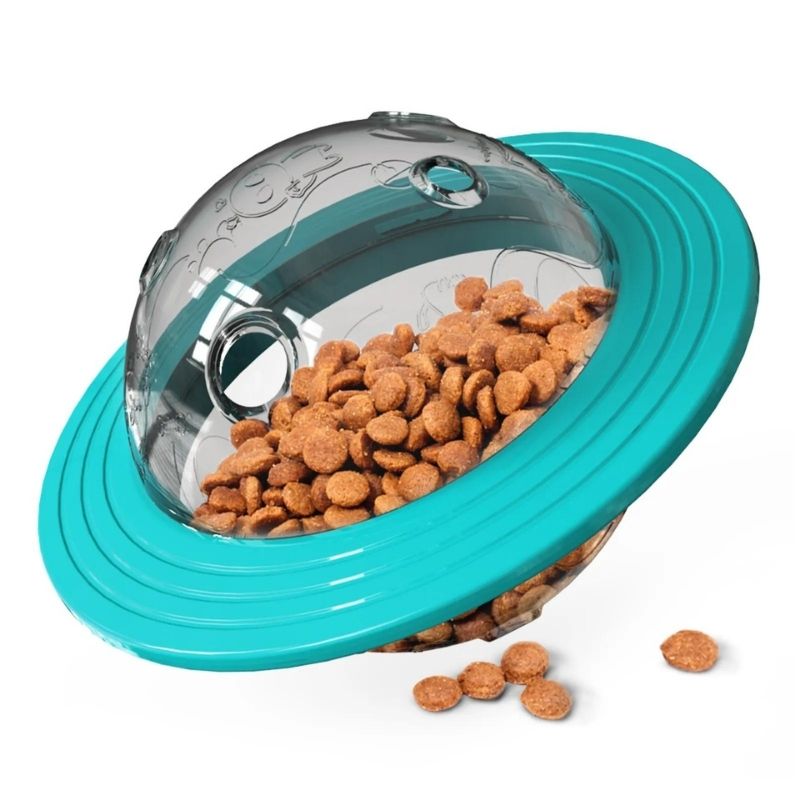
Do you know that dog puzzle games actually exist? Well, this Carrot Plush Interactive Dachshund Toy is one of those interactive toys that will make your dog’s mind work. The toy improves a dog’s intelligence, and what’s more important, you can also hide a small treat inside of each hole.

Establish a Comfortable Space:
Set up a comfortable, safe space for your dog. This could be a crate (if they’re crate-trained), a special room, or an area with their bed and favorite toys.
Encourage them to spend time there even when you’re home, so they view it as a safe and comforting place.
Practice Calm Departures and Arrivals:
When leaving and returning home, keep your demeanor calm and low-key. Overly emotional farewells and greetings can heighten anxiety.
A calm “goodbye” or simply leaving without fanfare can set a more relaxed tone.
Separation anxiety in Dachshunds: Wrapping Up
Overcoming separation anxiety is no overnight task. It’s about consistency, being patient and maintaining support. Consider it a road of progress rather than an end result. Note that your main goal is to live with a happy and satisfied Dachshund.
Finally, dealing with Dachshunds’ separation anxiety is a journey that requires patience, comprehension and support. Being able to identify the signs, using good methods and investing in your Dachshund’s health can improve its quality of life.
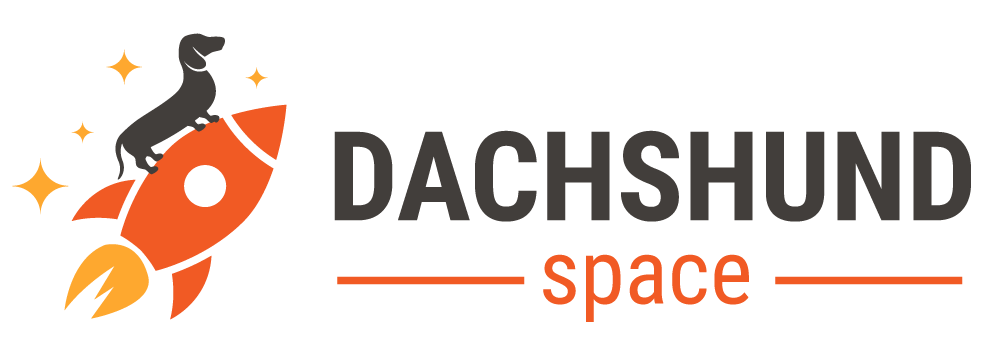
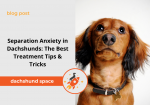

6 thoughts on “Separation Anxiety in Dachshunds: The Best Treatment Tips & Tricks”